Home> Company News> Hydraulic Pump Actuators: An Overview of Their Role and Function
- AddressNorth Tan Street, Jinan,Shandong
- Factory Address123 Ubi Ave 3 #12-30 Frontier Singapore 408867
- Worktime9:00-18:00(Beijing time)
- Phone(Working Time)86 0531-8299 9952
Understanding Hydraulic Pump Actuators
Hydraulic pump actuators play a crucial role in hydraulic systems by converting the hydraulic pressure generated by the pump into mechanical energy, which can be used to move or control various components in the system. These actuators come in a variety of types and sizes, each with its own specific function and application.
The primary function of hydraulic pump actuators is to transform the fluid energy in a hydraulic system into mechanical force or motion, which can be used to accomplish work. This is achieved through the use of various types of actuators, which are designed to convert hydraulic pressure into linear or rotary motion.
There are several types of hydraulic pump actuators, including linear actuators, rotary actuators, and piston actuators. Each type of actuator operates in a unique way and is used in specific applications.
Overall, understanding the different types of hydraulic pump actuators and their functions is essential for ensuring efficient and effective hydraulic system operation. Proper selection, installation, and maintenance of hydraulic pump actuators can help improve system performance, reduce downtime, and increase safety.
Function of Hydraulic Pump Actuators
Hydraulic pump actuators play a critical role in the operation of hydraulic systems, converting the energy generated by hydraulic pumps into mechanical force or motion. These actuators are widely used in a range of applications, from heavy machinery and industrial equipment to vehicles and aerospace systems.
The function of a hydraulic pump actuator is to convert the high-pressure hydraulic fluid generated by the hydraulic pump into mechanical force or motion. The fluid is directed to the actuator, which then uses this energy to move a piston, rod, or other component, generating the required force or motion.
Hydraulic pump actuators are commonly used in applications that require precise control of force or motion. They are often used in construction and mining equipment, where they can power hydraulic cylinders, motors, and other components. In addition, hydraulic pump actuators are used in automotive applications, such as power steering systems, and in aircraft systems, such as landing gear and flight control systems.
The advantages of hydraulic pump actuators are many. For one, they can generate a large amount of force relative to their size and weight, making them ideal for applications where space and weight are limited. Hydraulic pump actuators are also highly efficient, as they can convert the energy generated by hydraulic pumps into mechanical energy with minimal losses. Additionally, hydraulic pump actuators are capable of generating a range of forces and motions, making them versatile and adaptable to a variety of applications.
Overall, hydraulic pump actuators are an important component of hydraulic systems, providing the mechanical force and motion necessary for many applications. Understanding the function and types of hydraulic pump actuators is essential for anyone working with hydraulic systems.
Types of Hydraulic Pump Actuators
There are different types of hydraulic pump actuators available, and they can be classified based on their mode of operation or their shape. The following are some of the most common types of hydraulic pump actuators:
-
Linear hydraulic pump actuators: These actuators move in a straight line and are commonly used in applications such as lifting or pressing.
-
Rotary hydraulic pump actuators: These actuators rotate around a fixed axis and are ideal for applications such as steering or valve control.
-
Piston hydraulic pump actuators: These actuators use a piston to generate force and can be used for both linear and rotary motion applications.
-
Diaphragm hydraulic pump actuators: These actuators use a flexible diaphragm to create motion and are commonly used in applications such as pumping or metering.
-
Vane hydraulic pump actuators: These actuators use a rotating vane to create motion and are commonly used in applications such as conveyor systems or material handling.
Each type of hydraulic pump actuator has its own advantages and disadvantages, and the choice of actuator will depend on the specific requirements of the application. For example, linear actuators are best suited for applications that require precise control of motion, while rotary actuators are ideal for applications that require high torque and speed. Piston actuators are best suited for high force applications, while diaphragm and vane actuators are ideal for applications that require smooth and quiet operation.
Choosing the Right Hydraulic Pump Actuator
Choosing the right hydraulic pump actuator is crucial for ensuring optimal performance and longevity of a hydraulic system. Factors such as application requirements, load capacity, and space limitations need to be considered when selecting a hydraulic pump actuator.
- Application Requirements
The first step in selecting a hydraulic pump actuator is to identify the specific application requirements. This includes understanding the load capacity, travel distance, and speed requirements. Depending on the application, a linear, rotary, or piston hydraulic pump actuator may be the most appropriate choice.
- Load Capacity
The load capacity of a hydraulic pump actuator is an important consideration when selecting the appropriate size and type of actuator. A hydraulic pump actuator should be selected with a load capacity that is greater than the maximum load it will be required to move.
- Space Limitations
In some applications, space limitations may restrict the size and type of hydraulic pump actuator that can be used. It is important to take into account the available space and make sure that the selected hydraulic pump actuator fits within the designated area.
- Installation and Maintenance
Proper installation and maintenance are crucial for the efficient operation of hydraulic pump actuators. It is important to select an actuator that is easy to install and maintain, and that comes with clear instructions and technical support. Additionally, regular maintenance and inspections should be performed to ensure that the hydraulic pump actuator is functioning properly.
Overall, selecting the right hydraulic pump actuator is essential for ensuring the reliable and efficient operation of a hydraulic system. By considering application requirements, load capacity, space limitations, and installation and maintenance needs, the appropriate hydraulic pump actuator can be selected to ensure optimal performance and longevity.
Troubleshooting Common Issues with Hydraulic Pump Actuators
Despite their reliability, hydraulic pump actuators can experience issues from time to time. It is important to troubleshoot and address any problems as soon as possible to prevent further damage and ensure safe operation. Here are some common issues with hydraulic pump actuators and how to address them:
-
Slow or Erratic Movement: If the hydraulic pump actuator is moving slower than usual or in an erratic manner, it could indicate a problem with the hydraulic fluid. Check the fluid level and condition, and replace if necessary. It could also be due to a clogged filter, so make sure to inspect and clean the filter as needed.
-
Leaking Fluid: A leak in the hydraulic system can be caused by a damaged seal, hose, or fitting. It is important to identify and repair the leak as soon as possible to prevent damage to other components and ensure the system is operating safely. The damaged component will need to be replaced and the hydraulic system flushed to remove any contaminated fluid.
-
Excessive Noise: If the hydraulic pump actuator is making more noise than usual, it could be due to air in the system or a damaged pump. Check the hydraulic fluid level and condition, and bleed the system if necessary. If the noise persists, the pump may need to be repaired or replaced.
-
Overheating: Overheating of the hydraulic pump actuator can be caused by several factors, including low fluid levels, dirty fluid, or a damaged pump. Check the fluid level and condition, and replace if necessary. Inspect the pump and other components for damage and replace as needed. It is also important to ensure proper ventilation and cooling of the system.
-
Failure to Move: If the hydraulic pump actuator is not moving at all, it could be due to a malfunctioning solenoid, valve, or pump. Check these components for damage and replace as needed. It could also be due to a clogged filter or low fluid levels, so be sure to inspect these components as well.
Overall, it is important to regularly inspect and maintain hydraulic pump actuators to prevent issues and ensure safe operation. When troubleshooting issues, be sure to follow manufacturer recommendations and safety guidelines to avoid further damage or injury.
Safety Considerations when Working with Hydraulic Pump Actuators
When working with hydraulic pump actuators, safety should always be the top priority. The high pressures and forces involved in hydraulic systems can be dangerous if proper precautions are not taken. Here are some common safety considerations when working with hydraulic pump actuators:
-
Proper training and certification: It is important for anyone working with hydraulic pump actuators to be properly trained and certified in the safe use of hydraulic systems. This includes knowledge of hydraulic system components, pressure ratings, and safe operating procedures.
-
Protective gear: Hydraulic systems can create high-pressure leaks or bursts that can cause serious injury. Protective gear such as gloves, safety glasses, and protective clothing should always be worn when working with hydraulic pump actuators.
-
Regular inspections: Hydraulic pump actuators should be inspected regularly for signs of wear or damage, such as leaks, cracks, or corrosion. Any issues should be addressed immediately to prevent failure.
-
Lockout/tagout procedures: Before performing any maintenance or repair work on hydraulic pump actuators, the system should be properly locked out or tagged out to prevent accidental startup. This involves disconnecting power sources and clearly labeling the system to indicate that it should not be operated.
-
Proper lifting and handling: Hydraulic pump actuators can be heavy and difficult to handle. Proper lifting and handling techniques should be used to prevent injury, such as using lifting straps or cranes to move heavy components.
-
Emergency response procedures: In the event of a hydraulic system failure or other emergency, proper response procedures should be in place to ensure the safety of all personnel involved. This may include shutting down the system, evacuating the area, and contacting emergency services.
By following these safety considerations, workers can help prevent accidents and ensure the safe operation of hydraulic pump actuators. It is important to always prioritize safety when working with hydraulic systems to prevent injury and damage to equipment.
Advances in Hydraulic Pump Actuator Technology
Hydraulic pump actuators have been around for many years, but recent advances in technology have made them more efficient and effective than ever before. Here are some of the most notable recent developments in hydraulic pump actuator technology:
-
Digital control systems: The use of digital control systems in hydraulic pump actuators has greatly improved their efficiency and precision. These systems allow for better control over the speed, force, and position of the actuator, resulting in smoother and more accurate operation.
-
Smart sensors: Modern hydraulic pump actuators are equipped with smart sensors that can monitor various parameters such as pressure, temperature, and load. This allows for real-time monitoring of the actuator's performance and the ability to detect any potential issues before they become major problems.
-
Electro-hydraulic actuators: Electro-hydraulic actuators are a new type of hydraulic pump actuator that combines the benefits of hydraulic and electric systems. These actuators use an electric motor to drive a hydraulic pump, resulting in improved energy efficiency and reduced maintenance needs.
-
High-pressure capabilities: Recent advancements in hydraulic pump technology have allowed for the development of actuators that can handle higher pressures than ever before. This makes them ideal for use in applications that require high force and precision, such as in the aerospace industry.
-
Nanotechnology coatings: Some hydraulic pump actuators are now being coated with nanotechnology materials that can improve their durability and resistance to wear and tear. These coatings can also help to reduce friction and improve efficiency.
-
Integrated safety features: Hydraulic pump actuators are often used in applications that require precise and controlled movement, such as in heavy machinery and construction equipment. To improve safety, modern actuators often include integrated safety features such as limit switches and emergency stop buttons.
-
Wireless communication: Some hydraulic pump actuators now feature wireless communication capabilities, allowing them to be remotely monitored and controlled. This makes them ideal for use in remote or hazardous locations, where traditional wired control systems may not be practical.
These recent advancements in hydraulic pump actuator technology have greatly improved their performance and reliability, making them an essential component in many industries. As technology continues to evolve, we can expect to see even more innovations in hydraulic pump actuator design and functionality.
Industry Applications of Hydraulic Pump Actuators
Hydraulic pump actuators have a wide range of industrial applications, from aerospace to agriculture, manufacturing, and construction. As hydraulic systems continue to evolve, hydraulic pump actuators are becoming increasingly important in modern machinery and equipment. In this section, we will explore the latest advancements in hydraulic pump actuator technology, potential future developments, and their implications for hydraulic system design and operation.
Recent Innovations in Hydraulic Pump Actuator Technology
In recent years, there have been several significant advancements in hydraulic pump actuator technology, aimed at improving efficiency, reliability, and safety. Here are a few examples:
Smart Hydraulic Pump Actuators
Smart hydraulic pump actuators are becoming increasingly popular, thanks to their ability to self-monitor and adjust their performance based on changing operating conditions. These actuators use sensors and other advanced technologies to monitor key parameters such as pressure, temperature, and flow rate, and adjust their operation accordingly. This not only helps to optimize performance but also prevents damage and wear, ultimately leading to longer service life and reduced maintenance costs.
Advanced Materials
New materials, such as high-strength alloys and composites, are being used to produce hydraulic pump actuators with increased durability, strength, and resistance to wear and tear. These materials also enable more compact and lightweight designs, which are ideal for applications where space is limited, such as in aircraft or automotive systems.
Wireless Monitoring and Control
Wireless monitoring and control systems are becoming more common in hydraulic systems, allowing operators to remotely monitor and adjust the performance of hydraulic pump actuators from a central location. This technology also enables more accurate and efficient data collection, which can be used to improve system performance and prevent issues before they occur.
#2. Potential Future Developments in Hydraulic Pump Actuators
As hydraulic system technology continues to evolve, we can expect to see several future developments in hydraulic pump actuators. Some of the most promising include:
Improved Efficiency
Hydraulic pump actuators that are more energy-efficient are expected to be developed in the future, which will reduce power consumption and operating costs. These actuators may use advanced materials, wireless technology, and other innovations to optimize performance and minimize energy waste.
Increased Automation
The automation of hydraulic systems is a growing trend, as it can help to reduce the risk of human error, improve productivity, and increase safety. Future hydraulic pump actuators are likely to be more integrated with automation systems, allowing for more precise control and coordination of hydraulic system components.
Enhanced Safety Features
Safety is always a primary concern when working with hydraulic systems, and future hydraulic pump actuators are expected to incorporate additional safety features to prevent accidents and injuries. These features may include advanced sensors and emergency shutoff systems, as well as improved monitoring and control technology.
Implications for Hydraulic System Design and Operation
The advancements and future developments in hydraulic pump actuator technology have significant implications for hydraulic system design and operation. Here are a few key takeaways:
Improved Efficiency and Performance
The latest hydraulic pump actuators can significantly improve the efficiency and performance of hydraulic systems, resulting in lower operating costs and improved productivity. As these advancements continue, we can expect hydraulic systems to become even more efficient and effective, allowing for better performance in a wide range of industrial applications.
Increased Safety
With the addition of advanced safety features and automation technology, hydraulic systems are becoming safer and more reliable than ever before. This can help to reduce the risk of accidents and injuries in the workplace, leading to improved worker safety and reduced liability for employers.
More Complex Systems
As hydraulic systems become more advanced, they are also becoming more complex. This means that hydraulic system designers and operators must be more knowledgeable and skilled in order to work with these systems effectively. Proper training and education are crucial to ensuring that hydraulic systems are designed


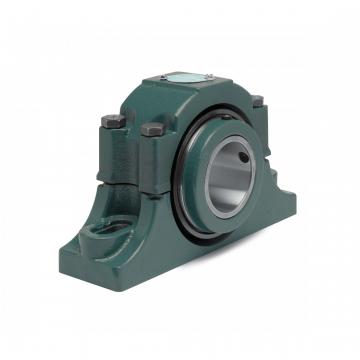 Mounted Tapered Roller Bearings P4B-EXL-212RE
Mounted Tapered Roller Bearings P4B-EXL-212RE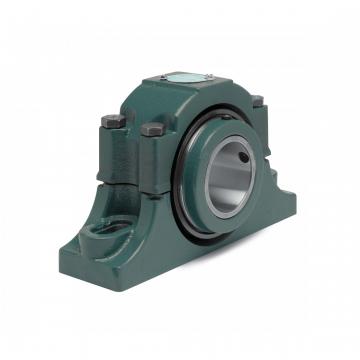 Mounted Tapered Roller Bearings P4B-EXL-400R
Mounted Tapered Roller Bearings P4B-EXL-400R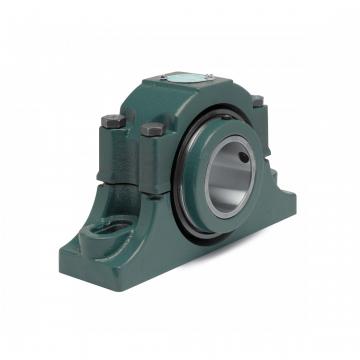 Mounted Tapered Roller Bearings P4B-EXL-400RE
Mounted Tapered Roller Bearings P4B-EXL-400RE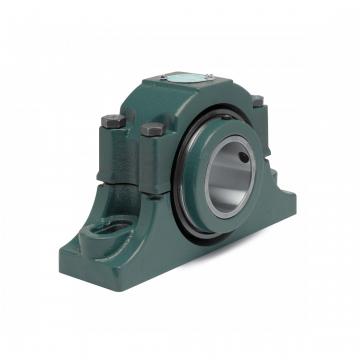 Mounted Tapered Roller Bearings P4B-EXL-315RE
Mounted Tapered Roller Bearings P4B-EXL-315RE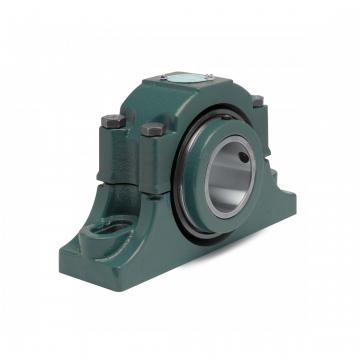 Mounted Tapered Roller Bearings P4B-EXL-207RE
Mounted Tapered Roller Bearings P4B-EXL-207RE